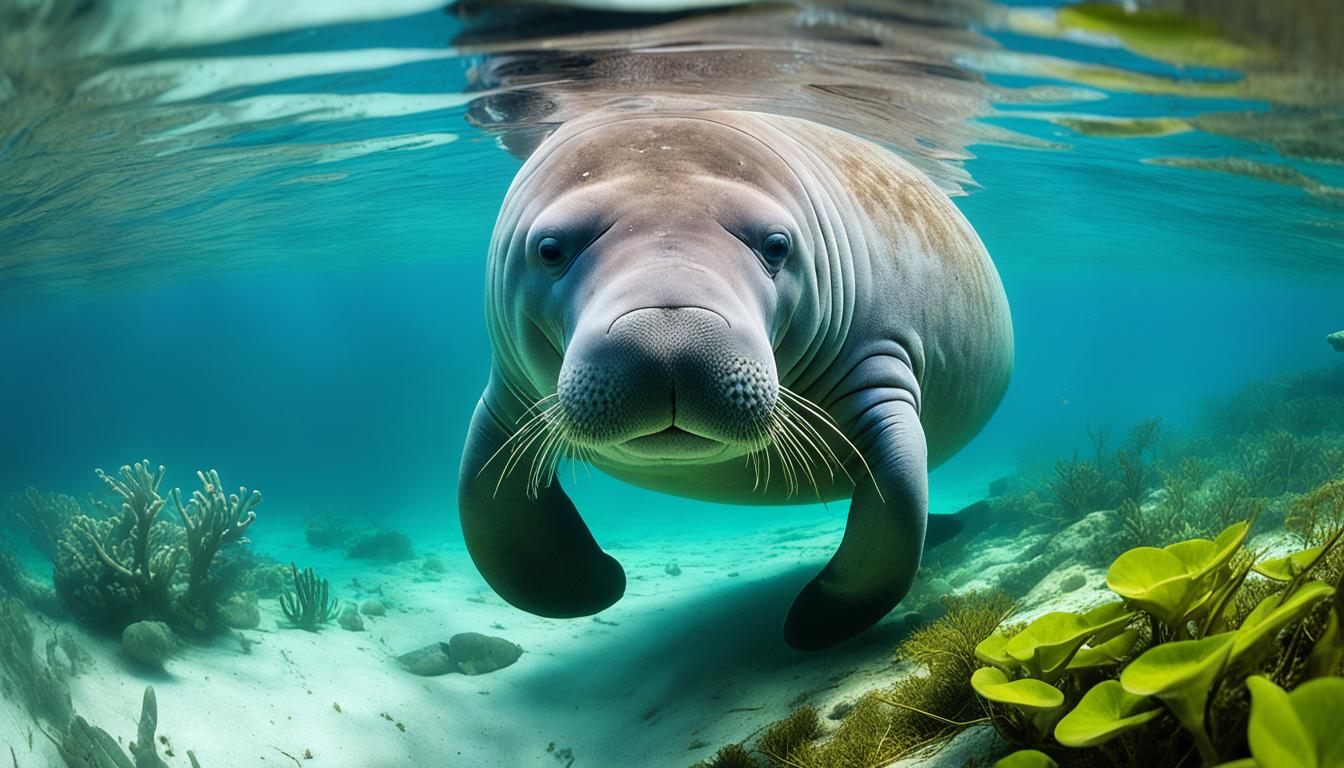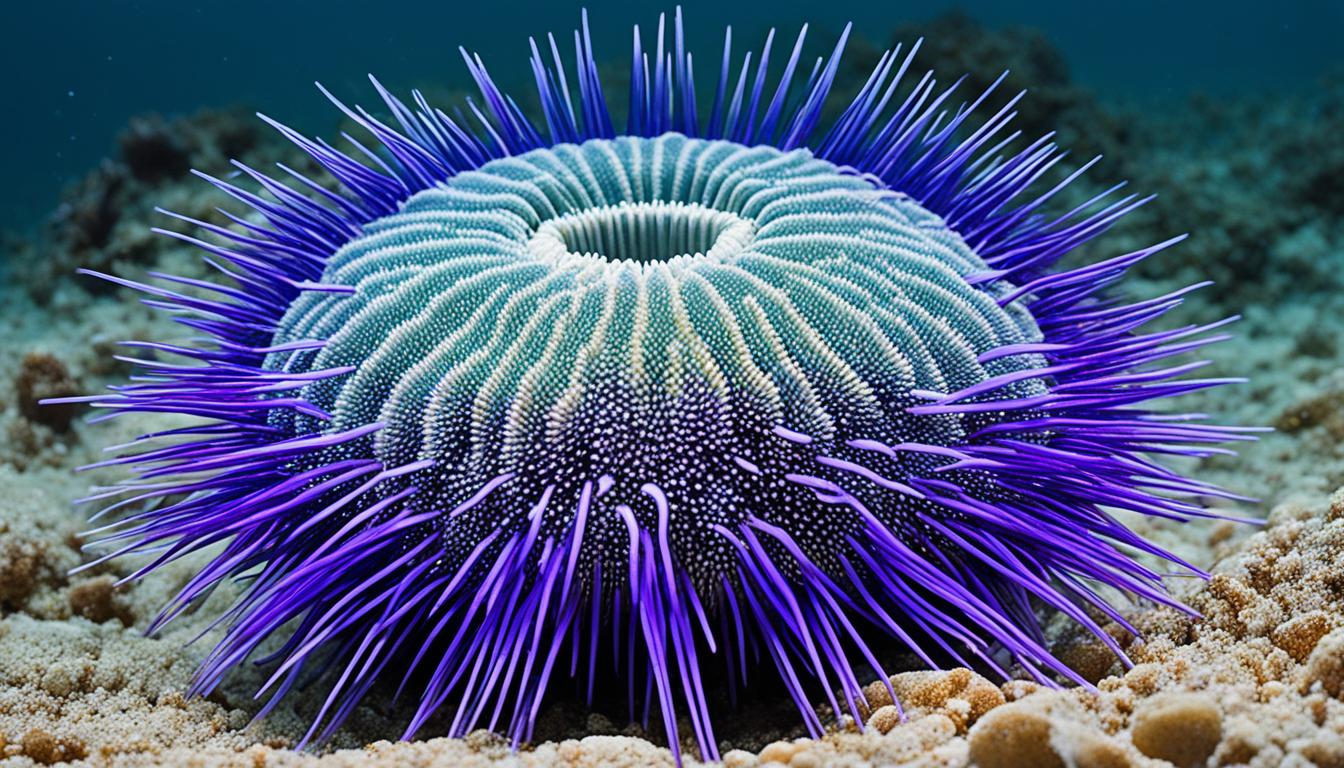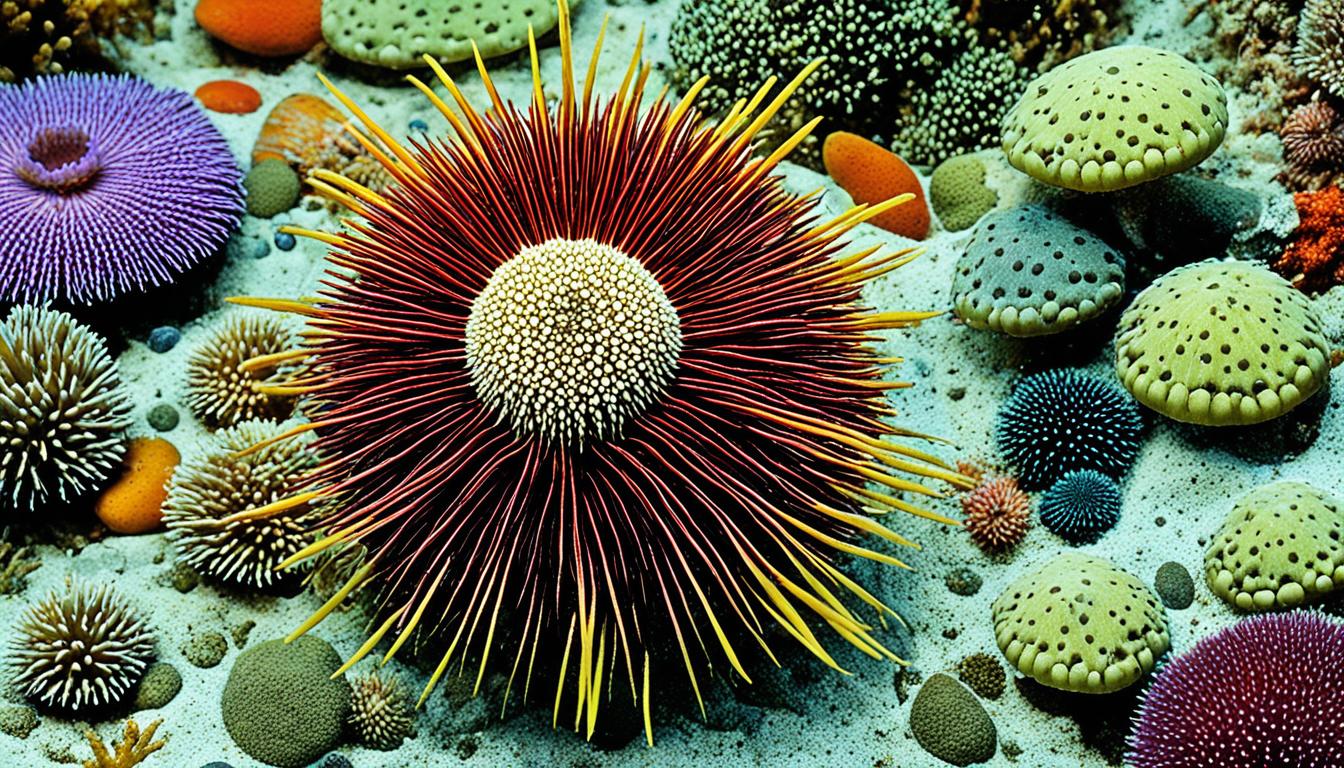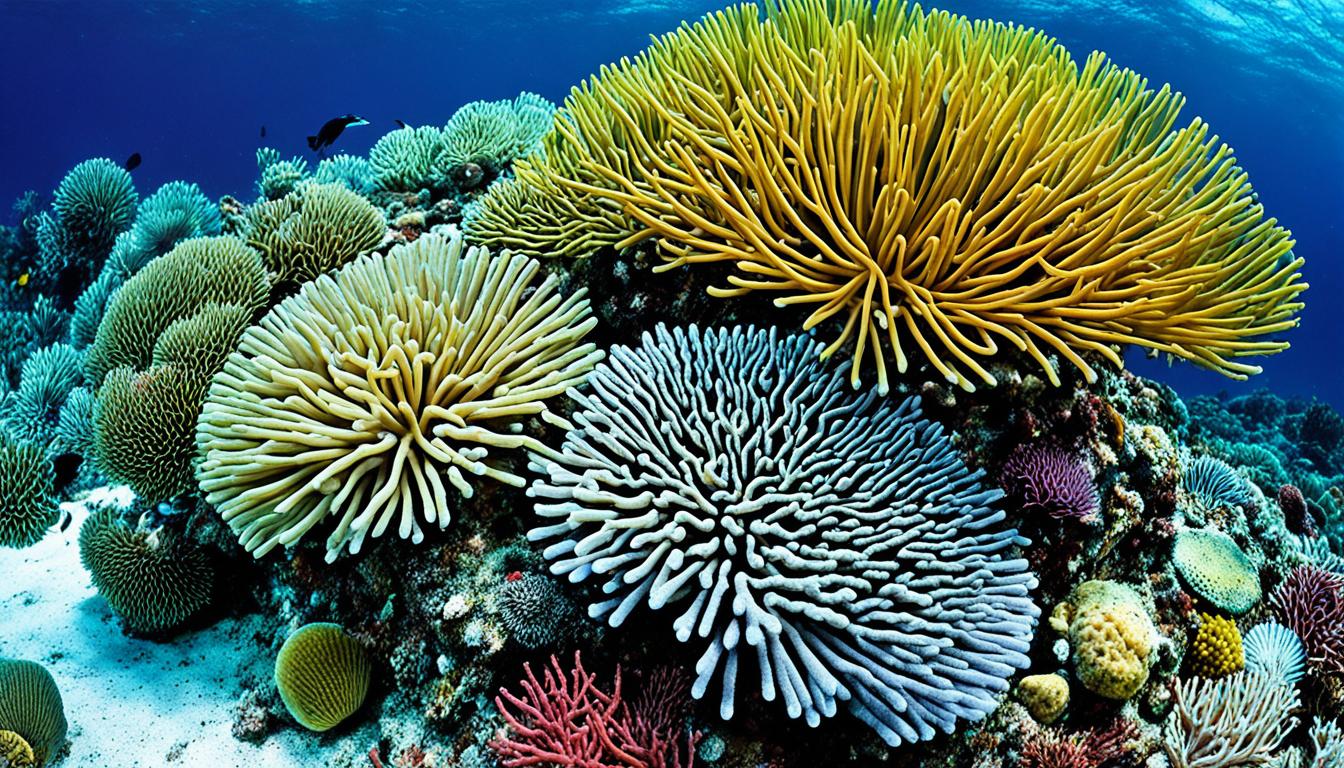Manatees, also known as sea cows, are huge and gentle creatures. They live in many types of water environments. Knowing where they live helps us understand their needs and how to protect them.
These amazing animals call places like freshwater lakes, rivers, coastal waters, and estuaries home. Florida is a key place for them. By learning about their living areas, we see how they fit into their world and why we must protect it.
Manatee Habitats Overview
Understanding where manatees live is key to knowing how they survive. Manatees live in both fresh and saltwater places. These spots have what they need to live and reproduce.
Definition of Manatee Habitats
Manatees live in areas with plenty of food, shelter, and places to breed. These spots help them move around and get the resources they need. This keeps them healthy and helps them have babies.
Types of Water Bodies Manatees Inhabit
Manatees like different kinds of water for different reasons. Some of their favorite spots include:
- Slow-moving rivers
- Shallow coastal waters
- Bays
- Estuaries
- Canals
In places like Florida, manatees hang out where there’s lots of plants in the water. These plants are their main food. Manatees can live in waters of different salt levels. This lets them move between fresh, salty, and a mix of both.
| Water Body Type | Characteristics | Importance to Manatees |
|---|---|---|
| Slow-moving rivers | Low flow, vegetation-rich | Provide food and protection |
| Shallow coastal waters | Warm, clear, protected | Ideal for feeding and breeding |
| Bays | Calm, nutrient-rich | Offer abundant food sources |
| Estuaries | Brackish water, diverse | Transition zones for feeding |
| Canals | Artificial, often shallow | Provide alternative pathways |
Where do manatees live?
Manatees live in a unique way across the southern United States and the Caribbean. They are found in Central and South America too. Their homes include various aquatic places, showing how they can live in different environments.
Geographic Range of Manatees
The West Indian manatee loves coastal waters, rivers, and estuaries. Florida is a key spot for them, especially in its warm springs and bays. In the warmer months, they move north to places like Massachusetts and Texas.
This shows how these marine mammals can adapt to different places.
Seasonal Migration Patterns
When it gets colder, manatees move to warmer areas. They go to springs and warm water from power plants in winter. This helps them survive the cold months.
Watching their migration teaches us about their behavior and how they adapt to the environment.
| Region | Winter Residence | Summer Range |
|---|---|---|
| Florida | Warm springs, coastal areas | Across southern U.S. states |
| Caribbean | Coastal waters | Greater Caribbean region |
| Central America | Rivers and coastal areas | Extensive coastal distribution |
| South America | Amazon Basin | Coastal habitats |
Importance of Aquatic Vegetation
Aquatic vegetation is key to supporting manatee populations. Manatees eat various aquatic plants as their main food. The plants they eat affect their health and survival in their home.
Knowing what plants manatees eat helps us understand their diet and the health of their environment.
Key Food Sources for Manatees
Manatees eat a lot of aquatic plants, making them a big part of their diet. They eat about 15% of their body weight every day. They go for plants that are full of nutrients. Some of their main foods are:
- Manatee grass
- Turtle grass
- Shoal grass
- Submerged aquatic plants such as eelgrass
- Emergent plants like water hyacinth
Types of Aquatic Plants Consumed
Manatees eat different plants depending on where they live. In shallow coastal waters, they pick certain grasses and plants. What they like to eat affects the health of their homes. Here’s a quick look at some of their favorite plants:
| Plant Type | Description | Habitat |
|---|---|---|
| Manatee Grass | A dense seagrass with broad leaves, providing high nutritional value. | Shallow coastal waters |
| Turtle Grass | Long, slender leaves that support diverse marine life. | Coastal areas and warm waters |
| Shoal Grass | A resilient species, common in sandy substrates. | Shallow waters and tidal zones |
| Water Hyacinth | A floating plant with large, thick leaves, often found in freshwater. | Freshwater bodies |
Warm Water Refuges: A Critical Habitat
Warm water refuges are key for manatees when it gets cold. They come from both natural and man-made sources.
Natural vs. Artificial Warm Water Sources
Natural warm water spots include freshwater springs. These places have a steady temperature, offering a safe haven for manatees in the cold. On the other hand, artificial sources come from things like power plant cooling systems. Both types help manatees avoid the dangers of cold stress.
The Role of Warm Water in Manatee Survival
Manatees struggle in winter when it’s below 68ºF. Not having enough warm water can cause serious health problems or even death. Before, they went to natural springs for warmth. Now, they also use man-made warm water spots to stay alive during the cold.
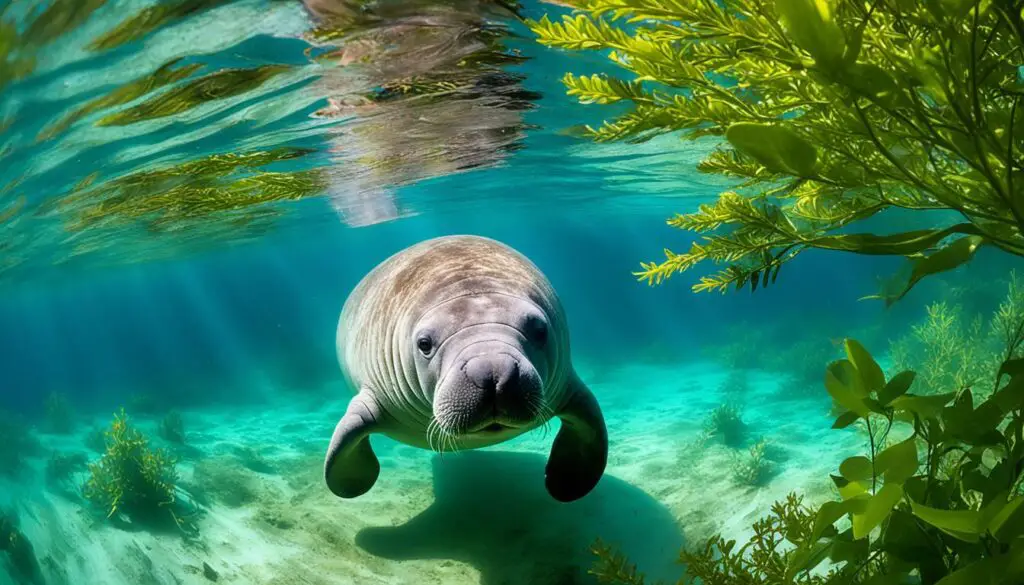
Threats to Manatee Habitats
Manatees face big challenges that harm their homes. One big threat is losing their habitat because of coastal development and pollution. More people living near the coast hurt the natural places manatees call home.
Another threat is boat collisions, which are becoming more common. As more boats go by, the chance of hitting a manatee goes up. These gentle creatures are at risk.
There’s also a problem with less aquatic plants, like seagrasses. Poor water quality and harmful algae make this worse. Without these plants, manatees struggle to find enough food.
Climate change makes things even harder for manatees. It changes the weather and warms the water, affecting their homes. This makes it tough for them to survive.
We need to work together to help manatees. Governments, conservation groups, and local communities must join forces. Together, they can make safe places for manatees and the ecosystems they live in.
| Threat | Description | Impact |
|---|---|---|
| Habitat Loss | Coastal development and pollution lead to the degradation of natural environments. | Reduced space for manatees to live and feed. |
| Boat Collisions | Increased boat traffic in manatee habitats increases the risk of accidents. | Higher mortality rates among manatee populations. |
| Decline of Aquatic Vegetation | Reduction of seagrasses due to water quality issues and algal blooms. | Insufficient food sources for manatees. |
| Climate Change | Altering ecosystems and impacting the availability of warm-water habitats. | Threatening the survival of manatees during colder months. |
Conservation Efforts for Manatee Habitats
Protecting manatees is key to saving their homes. Groups like Save the Manatee Club help spread the word and teach people why it matters. They work to get everyone involved in keeping manatee habitats safe.
They focus on understanding manatees and what they need. This means protecting both natural and man-made warm spots for them, especially when it’s cold. Setting speed limits for boats near manatees helps prevent harm.
Getting the community involved is crucial for saving manatees. You can join in by helping with projects and supporting causes that protect their homes. Together, we can make sure manatees and other wildlife have a healthy place to live. This way, we can all enjoy watching these amazing animals for years to come.

